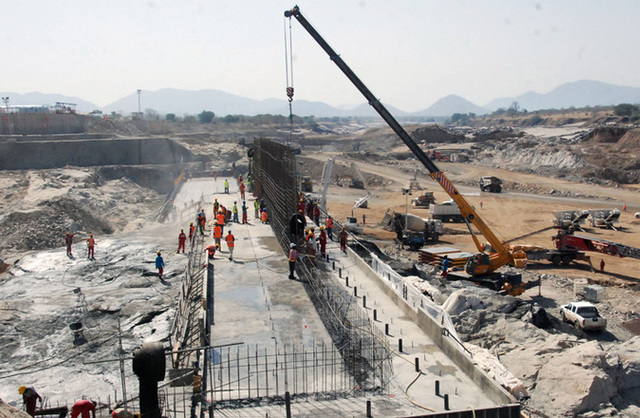Ethiopia’s National Council has announced that the Grand Ethiopian Renaissance Dam (GERD), currently being constructed over the Blue Nile, would start generating 700 megawatts of electricity from 2015.
“By next year, two of the turbines among the 16 will start to generate 375 MW electric power each,” Zading Abreha, the National Council’s Deputy Director General, said.
Construction of the project, which started in 2011 and estimated to cost $4.7 billion, was awarded to Salini Costruttori SPA, an Italian company that has constructed over 20 dams spread across Africa, Asia and Europe.
Although Ethiopia’s Metal and Engineering Corporation (METEC) was awarded hydro and electro mechanical work, installation of all electro-mechanical equipment and supply of generators and turbines was given to Alstom, a French engineering company..
Currently 30 percent complete, $1.3 billion has been invested in the dam which is also expected to ensure and regulate the steady flow of water downstream, preventing flood occurrence in countries like Sudan and Egypt.
Egypt has however raised concerns about the construction of the dam, saying it will restrict the flow of water into the country, thus affecting its citizens, farmlands and livestock. The country asked that construction be put on hold until further studies are conducted, despite an initial study by the International Panel of Experts (IPoE) on Ethiopia’s request.
Ethiopia refused on the basis that it is a ‘flagship project’, but was willing to consider Egypt’s proposals on the implementation of the recommendation made by the IPoE report. It said it will not stop the construction of what is considered to be one of the largest dams in the world.
On completion, the GERD is expected to produce 6, 000 megawatts, supplying the electricity needs of the country as well as serving as a green energy hub to other East African countries, delivering clean and renewable energy.








